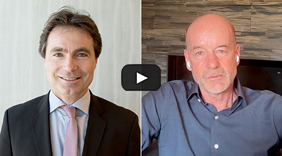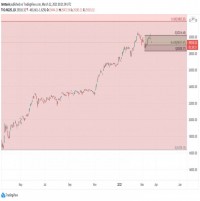|
Quantum Forecasts Quantum Forecasting LLC is one of those relatively few systematic commodity trading advisors that do not fall into the trend-following category. Quantum’s models forecast market movements for a specified time interval, often lasting 10 or 15 minutes. No trends or economic fundamentals are involved in making the forecasts. Below, Paul Moore, chief executive officer and managing member of Quantum, explains how the approach works. He says they are not high-frequency traders, although they do large numbers of trades on days when there are many buy/sell signals: Our research team in Rome, Italy, developed the technology used in our trading systems. It is based on an original, mostly unpublished theory that my partners, Antonio Ballarin and Simona Gervasi, studied and developed over the past 18 years. Their work uses neural networks and cybernetics. Members of our group mostly have a scientific and technological background, not a finance background, so it was an adventure applying the theory to real market data. Since the predictive capabilities are remarkably constant regardless of the time series analyzed, in the past this method was used for purposes like credit scoring, pollution measurements and cancer prognoses. Once we realized that the system consistently predicts financial market movements, we built a CTA business. We chose futures as the instrument mainly because you can go short without the typical limitations on shorting stocks. To begin with we chose the highest volume markets, like currencies and stock index futures.
Intraday Trading Our forecasts are accurate at least 80% of the time. Taking into account brokerage commissions, fees and slippage, that translates to around 60% to 65% of trades showing a profit. As our volume increases we think the clearing firms will offer us lower commissions, which will greatly improve profits especially for the 10 minute and 15 minute models. At the beginning of a day we have no idea what trades we’ll do. The data comes in and the system gives direction forecasts. This is a systematic forecasting method with no trend following and no macro involvement. We make forecasts for a precise short term intraday period. There is less than 5% discretion and that only to avoid rollover periods, system errors etc. However, we don’t operate without constant human supervision. We look at a selected single market within one chosen time frame. We can take any market tick data and distill it down into the time frame we want to analyze. Say we’re making 10-minute forecasts every five minutes. In the next 10 minutes where will the price go? There are three possibilities: long-buy, short-sell, middle range-stay in cash. There is another possibility but it is rare, namely the system is unable to understand what’s happening in the market and provides no signal. On a curious note, we did experience that condition on a weekly forecast last year, before Lehman Brothers collapsed. We don’t know what the system picked up in the data, but it was an interesting coincidence. Trends or macro factors are not part of our approach, but we now apply a filter to catch big news events. During those times the system may be put on stand-by. We do not feel compelled to trade all the time. Out trading volume is about 95% intraday, so there’s very little overnight risk As our assets grow we expect to trade almost exclusively intraday. We are not ultra ‘high frequency’ traders, although we do a lot of trades when there are many buy or sell signals. With the ‘short term’ models, the platform is currently producing around 5,000 trades a month per million dollars managed.
Returns With great timing, our CTA started trading in July 2008! In fact we did very well that summer and after a rough patch in September and October finished the year with a nice gain. So far, this year has also been good for us. That shows our difference from trend following, which ran into trouble in 2009 after a great 2008. We set up a target of 30% annual growth and beat it again this year as our year-to-date return is already above that. We’re extremely bullish on our future, with some amazing new improvements being tested as this goes to press. Quantum can operate in all North America, as well as in the UK starting in January. Recently our partner, Quantum Global Financial Corp., was licensed in Canada as a hedge fund structure. Their Holon Trading Program currently offers the same basic strategy as our US CTA, but over time it will vary as we deploy exchange-traded funds and other instruments to the strategy.
|
|
This article was published in Opalesque Futures Intelligence.
|





 RSS
RSS











